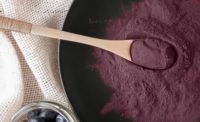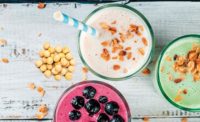Customizing Premixed Dietary Blends for New Functional Formulations
Proactive and preventive premixes, typically found in supplements, are becoming more common in finished food products like nutrition bars and snacks

Premixed dietary blends that include vitamins, minerals, nutritional lipids, probiotics, prebiotics and other proprietary ingredients are becoming more customized. The latest trend is to formulate them toward supporting both the preventative and proactive needs of various consumer categories. Proactive and preventive premixes are often found in drink mixes or supplements, but they have been appearing more regularly in finished consumed food products, like nutrition bars and snacks. While the origins of fortification were to improve existing micronutrient deficiencies in humans, such as vitamin D in milk and folate in cereals, today’s fortifications typically go beyond the level of merely forestalling deficiencies.
Today’s suppliers do more than simply mix a formulation to the customer’s request; they offer guidance and expertise, typically staffing nutritionists, biochemists, and medical experts, as well as experts on regulations. They realize that often the company ordering a premix might not have the knowledge or in-house experience to create a safe and effective blend that includes the appropriate amounts and delivered bioavailability for each vitamin, mineral, or other component.
Dietary blends can be great if delivered at the proper ratio and dangerous if not. It is crucial for companies creating premixed ingredient blends to provide the expertise needed to ensure safety across the industry. Premix suppliers’ R&D teams also can inspire the product manufacturer to create products that include blends they might not have even considered, bringing further added value to such a partnership.
Premix Trends
Some exciting new market-ready premixes gaining interest are those designed to support immunity, mobility, maternity health, and infant nutrition. Immunity boosting beverages in particular have increased in popularity due to the recent Covid-19 pandemic, and the trend continues. Other categories, such as beauty-from-within, sexual health, and athletic performance have translated into electrolyte drinks and hangover cures. Many such products are showing up in mainstream markets. Electrolyte drinks also have expanded into products marketed for everyday consumption and improved hydration.
Other changes in premixes reflect adjustments to certain vitamin and mineral requirements, such as for Vitamin D, a nutrition of concern that approximately two-thirds of consumers don’t get enough of. Following a petition from Kellogg Co., the FDA recently announced increases to the fortification levels of vitamin D allowed within the cereal category, and now allows fortification of Vitamin D in grain-based bars. This opens up new opportunities in fortifying nutritional bars and other food products consumers eat on a regular basis.
Food fortification beyond simply adjusting for micronutrient deficiencies will only grow and encourage more of the proactive premix blends for such benefits as sleep and immunity in nutritional bars and breakfast products. Already, companies such as Post Consumer Brands, LLC are taking that path. The company’s new Sweet Dreams cereal contains a mix of botanical blends and vitamins designed to support sleep.
Vitamin companies and dietary premix suppliers should ensure they make these blends available to start-ups and entrepreneurs who might not be ready to purchase hundreds of pounds at a time. Creating some general off-the-shelf blends that can be sold to more than one start-up could help this trend take off more efficiently than focusing on larger CPG companies who can afford the high minimum order quantities.
Rachel Zemser, MS, CCS, is a San Francisco-based food scientist, chef, and certified culinary scientist consultant with more than 20 years of industry experience in shelf-stable, acidified sauces, dressings and dairy products, as well as food microbiology, fermentation and quality/safety plant operations. She can be reached at www.theintrepidculinologist.com.
Cleaning Up
Clean-label and natural ingredients have proven extremely important to consumers. While there is no specific definition of “natural” or “clean” by the FDA, transparency that shows exactly what is going into the blend, as well as the carriers (some of which are gelatin based) are important to relay to the consumer as well.
Looking for a reprint of this article?
From high-res PDFs to custom plaques, order your copy today!






